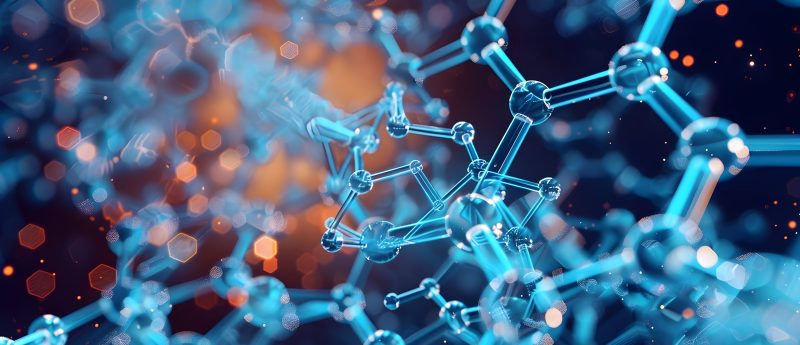Webinar Q&A follow-up: Panel discussion on peptide and large molecule analysis by LC-MS

Thank you everyone who attended our live panel discussion on peptide and large molecule analysis by LC-MS. Below are some responses to the questions posed during the live event and from the survey that we did not have time to answer. We hope this is a useful resource and thank our webinar attendees and our speakers, Erin Chambers (Waters Corporation), Jeffrey Duggan (Boehringer-Ingelheim Pharmaceuticals), Fabio Garofolo (Angelini Pharma), Roland Staack (Roche – Pharma Research and Early Development (pRED), Roche Innovation Center Penzberg), and Jianing Zeng (Bristol-Myers Squibb) for their time.
Q&A follow-up
1. What’s the agency’s requirement for validation of biomarker (protein) quantification in tissues? Do we need a full validation as with the plasma methods?
Jianing: Right now I am not aware of any agency’s requirement for validation of biomarker quantification in tissue. Fit-for-purpose validation applies.
2. Can you please comment on the background noise from the capture reagent in the hybrid technique (LBA and HRMS)?
Jianing: Cross interference of the capture reagents or non-specific binding may cause the background noise in the hybrid technique.
3. How do you handle different PK results from different signature peptides from the same protein?
Jianing: This depends on the purpose for including multiple signature peptides in the analysis. Different signature peptides may represent PK from a different functional area or different forms of the protein. In addition, it can be a stability issue of the protein in vivo. Some signature peptides may represent active protein concentration while others are total protein concentration.
4. What is the best possible explanation for cases when LBA results are higher than LC-MS and LC-MS results are higher than LBA? This is a burning key question and any insight and hypothesis will help utilize/leverage the techniques towards their strengths and weakness.
Jeff: The results are marginally higher in assays where we have compared. One reason is that LC-MS assays tend to measure total drug with no preference for bound versus unbound. This is not strictly the case for immunocapture LC-MS assays. I think, that rather to say one technique is wrong and one is right, it should be realized that the two techniques often give different information.
Roland: Jeff’s comment is absolutely correct. In general, a direct comparison is difficult, especially since the LBA format and assay procedure can be designed to analyze only free/active or total drug. If the LBA detects a different analyte as the LC-MS method, the results certainly differ from each other, and comparison of two methods that determine different analyte (forms) is actually comparing apples and oranges. This strengthens the need of a harmonization of large molecule bioanalysis, independent of the technology. The results of a clearly characterized “total drug” LBA assay and a “total drug” LC-MS assay should be comparable, since they aim to analyze the identical analyte (form).
5. How do you show sufficient “active” drug exposure in a preclinical safety study in case an immune response occurs and “total” drug was determined by LC-MS?
Jeff: You cannot. But you may be able to get some of this information from target immunocapture LC-MS methods, that is to use a target or recombinant version of the target as the capture reagent, such that the drug must have a free epitope to bind to the target for IC.
Roland: Schaefer et al. reported on such a case and established “ex -vivo” potency assays to get information on active drug exposure (Bioanalysis, 7 (24), 3063-72, 2015). The use of a hybrid LC-MS method with a “target binding” extraction step, might provide information on “target binding competent drug fraction”, but not necessarily on active drug, since such a procedure might significantly shift the equilibrium between the drug and soluble binding partners such as anti-drug antibodies.
6. What specific modifications have you made to LC-MS protein methods to measure selectivity and matrix effect during validation?
Jeff: We have made several, especially for immunocapture techniques: please see my summary. LLOQ and blanks for individuals, at least 10; immunocapture recovery; testing ADAs, disease matrix and circulating ligands.
7. How can you increase the stability of large molecules and improve the method sensitivity without losing its activity?
Jeff: Cannot with LC-MS, as it is a destructive method
8. Why is there a discrepancy between the results of LC-MS quantitation methods and ELISA in terms of lower end (terminal phase) of mAb PK studies?
Jeff: Because they are different methods. If you are concerned about molecular integrity and metabolism of the drug, there are a number of techniques we are using to test this: intact LC-MS; monitoring peptides; and HRLC-MS of proteolytic peptides to look for modifications. LBA methods do not necessarily detect those changes either, only in as much as they inhibit binding of the capture and detection reagents.
Jianing: Cross interference of LBA (e.g. reagents cannot differentiate protein and catabolites; protein and endogenous forms) may cause LBA results to be higher than LC-MS. LC-MS results can be higher than LBA if LC-MS measures total and LBA measures free protein concentration due to ADA bindings, target binding etc. Sometimes LC-MS and LBA measure different forms of the same protein.
Roland: This question can only be answered if the two methods are clearly characterized with regard to the question whether they determine total of free/active drug. Assuming, that the LC-MS method determines total drug and that the ELISA assay uses a format for free drug, a difference between these two methods is particularly expected at the terminal phase since the drug concentrations are low (lower) and thus the influence of soluble binding partner, e.g. shed target, ADAs, becomes more relevant.
9. What percentage of FDA findings have supporting LC-MS data for large molecules?
Jeff: Our survey says 15%
10. Is there a strategic approach for monoclonal antibody analysis?
Jeff: Only in that the specific peptides sought as surrogate are limited to those that are unique, in the variable or CDR region of the mAb.
